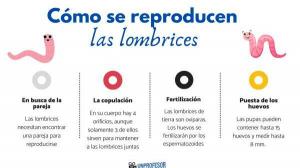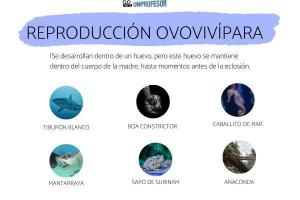Difference between BIOSPHERE and ECOSYSTEM

There are different terms to refer to the life that inhabits the different environments of our earth and which, together, constitute the different communities that make up the different communities of our planet. Differentiating these terms can sometimes be confusing, so in this lesson from a TEACHER we will try to explain in an easy way what is the difference between biosphere and ecosystem. If you are interested in learning how to differentiate them, follow us in this new article!
Index
- What is the biotope of an ecosystem
- What is biocenosis
- What is an ecosystem
- What is the biosphere
- Difference between biosphere and ecosystem
What is the biotope of an ecosystem.
When we find ourselves on any given day walking through our city, we can observe a large community of animals and plants that live and relate to the environment that surrounds them.
There we will find different environments, such as parks, lagoons, lakes, rivers or river walks. In each of these environments, the first thing that we can see that they consist of factors that, although they are not living beings, are there and the life that inhabits there must adapt to them. These are factors such as
soil, the nature of the soil, the amount of vegetation existing water, the water from any source or the conditions of this water, but also climatic factors such as the amount of precipitation, the temperature or the amount of light.All these factors and climatic conditions that condition animal and plant life in their environments are called by the name of biotope. Sometimes reference is also made to the concept of abiotic factors, to call all those factors or conditions that influence life, but are inert.
What is biocenosis.
The second fact that strikes us is the life that inhabits a certain environment, both animals, such as the little birds that we observe in a park, the insects of the ground, the spiders, the flies, the worms or the fish of a lake or river, amphibians or aquatic birds that come to feed, such as vegetables, such as roses, daisies, thistles, heather or various types of trees.
Within this life, individuals of the same species are grouped within a population and the set of populations of the different species they form a community.
To all these living animal and plant individuals that are part of the environment they are grouped under the term of biocenosis and, as we saw before with the abiotic or inert factors of the environment, sometimes we also refer to all this life present in a medium as biotic factors.

Image: OVACEN
What is an ecosystem.
After reviewing these basic concepts, such as population, community, biotic, abiotic, biotope or biocenosis factors, we can introduce the concept of ecosystem.
These concepts refer to the individual components of an ecosystem, but the analysis of the interactions that occur between the biotope and biocenosis It is what allows us to understand that all those animals and plants that we saw and the park and the physical environment that they inhabit constitute the same thing, the ecosystem.
Therefore, the ecosystem encompasses all that set of species that live in a given area and that form populations and communities (biotic factors) and the interactions between them and with their environment (abiotic factors) through processes such as parasitism, competition, predation or symbiosis.
In addition to the relationships that are established between species, we have those that living organisms establish with these abiotic factors from the environment, fulfilling a cycle within the ecosystem, so that when they die and disintegrate, they return in the form of nutrients and Energy. All the organisms that make up the ecosystem depend on a flow of matter and energy that are set on it.
Types of ecosystems
Thus, we can divide the organisms of an ecosystem into:
- Producers (which are the autotrophic organisms that make their own food and which are normally plant organisms)
- Consumers (the organisms that consume the food produced by the producers). Among consumers are divided into primary or herbivores (they feed on plants), secondary or carnivores (they feed on herbivores) or tertiary (they feed on carnivores). Another type of organism are decomposers, which feed on dead organic matter.
What is the biosphere.
The biosphere refers to one of the four capable that make up planet earth: biosphere, hydrosphere, lithosphere and atmosphere. The term biosphere was coined by the English geologist Eduard Suess and by the physicist Vladimir I. Vernadsky and represents the layer where life lives and develops.
The biosphere is a very variable layer in terms of extension, since it includes the heights reached by some birds and the greatest sea depths on the planet reached by organisms aquatic.
However, these cases are exceptional, since most of life on earth develops in a much narrower strip, where the oxygen level and temperature allows most animal species to live.
Difference between biosphere and ecosystem.
After knowing the terms it is easier to determine the difference between biosphere and ecosystem. Therefore, the biosphere is the layer of the earth where life unfolds, which comprise the set of different ecosystems that make up our planet and that interact with each other.

If you want to read more articles similar to Difference between biosphere and ecosystem, we recommend that you enter our category of biology.
Bibliography
- Vernadsky, V. I. (1997). The biosphere. Madrid: Argentaria Foundation.
- Prebisch, R. (1980). Biosphere and development. In: Styles of development and environment in Latin America-Mexico, DF: Fondo de Cultura Económica, 1980-p. 67-90.
- Canavilhas, J. (2011). The new media ecosystem.



